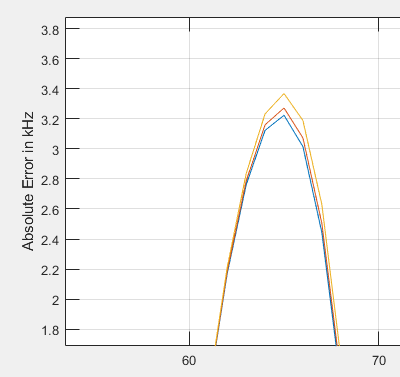I'm not able to convince a colleague on the following topic.
Statement: If, and only if, the sample frequency is sufficiently large and above the Nyquist frequency it does not matter what fs is as long as the signal length (in time domain) is constant.
Let's say we have a sinusoid with a frequency of 214 kHz. Let's say we take an analog measurement that is a 100 µs long. If we would sample at 10 MHz we would have 1000 samples ($100u*10M=1000$). If we would sample at 5 MHz we would have 500 samples. Regardless $ bin_{size} = \frac{fs}{n_{samples}} = \frac{1}{t_{length}} $.
In the example above the bin size would be 10 kHz, therefore one would find two strong magnitudes at freq 210 and 220, where 210 is slightly larger. With interpolation one can find the 214.
Now it seems counter intuitive that a higher sampling frequency does not improve things.
Is there any reason/benefit to use a higher sampling frequency as the bin size remains constant?
EDIT Thanks for the replies so far, let's add some more! Using a sinusoid and sweeping over it's frequency from 50 to 1000 kHz we can see that we can determine it's frequency quite accurately (I do a parabolic interpolation on the bin, it's quick sue me😂).
Sinusoid sampled at 2.5, 5 and 10 MHz (yellow, red, blue):

Zooming in we can indeed see a marginal improvement due to quantization (note, obviously this also plays in a role in my interpolation!)

Let's say, rather than a 'regular' sinusoid we have a damped sinusoid. We do the same thing and keep the decay-rate constant. Now something interesting happens that I currently do not understand. The accuracy decreases when the sample rate increases! It is now also strongly influenced by the phase, which makes sense as there's "less signal" to work with with phase 0 or $\pi$ vs $\frac{\pi}{2}$ or $\frac{3\pi}{2}$ (due to damping).

Any thoughts on why a higher fs harms the frequency estimation?
